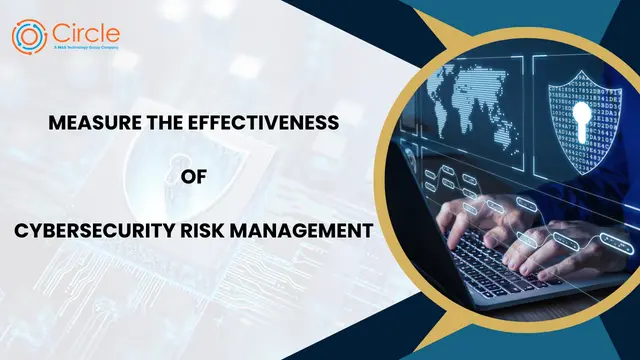
Cybersecurity risk management is crucial for protecting organizations from cyber threats to ensure the integrity of their digital assets. Effectively measuring the efficiency of cyber security risk management practices is essential for identifying areas of improvement and enhancing overall security posture. By employing robust measurement techniques, organizations can evaluate the effectiveness of their risk-management strategies & make informed decisions to mitigate potential risks. This article explores various methods for measuring cybersecurity risk management effectiveness and the fundamental concepts and processes involved in cyber risk management.
1. Understanding Risk Management in Cyber Security
Cybersecurity risk management involves identifying, assessing, and mitigating potential risks to an organization’s digital infrastructure and sensitive information. It encompasses a systematic approach to identifying vulnerabilities, analyzing threats, and implementing controls to minimize the impact of security incidents. Effective risk management in cybersecurity requires a thorough understanding of the organization’s assets, the evolving threat landscape, & the potential consequences of security breaches. By proactively managing risks, organizations can protect their data, maintain regulatory compliance, and safeguard their reputation.
2. The Cybersecurity Risk Management Process
Cybersecurity risk management follows a structured framework to effectively identify, assess, and mitigate risks. This process typically involves the following steps:
Risk Identification: This step involves identifying potential threats and vulnerabilities impacting the organization’s information assets. It includes conducting asset inventory, threat intelligence analysis, and vulnerability assessments to identify potential risks.
Risk Assessment: Once risks are identified, they are assessed based on their likelihood & potential impact on the organization. Risk assessment techniques may include:
● Qualitative and quantitative analysis.
● Risk scoring.
● Scenario-based analysis to prioritize risks and allocate resources effectively.
Risk Treatment: After assessing risks, organizations develop risk treatment plans to mitigate or transfer identified risks. Risk treatment options may include:
● Implementing technical controls.
● Enhancing security policies and procedures.
● Transferring risk through insurance.
● Accepting residual risks based on the organization’s risk tolerance.
Risk Monitoring and Review: The final step involves ongoing monitoring and reviewing implemented controls to ensure their effectiveness in mitigating risks. This includes regular security assessments, vulnerability scanning, incident response testing, and continuous improvement of risk management processes based on lessons learned & emerging threats.
3. Identifying the Greatest Personal Cybersecurity Risk
One of the most serious personal cybersecurity risk is the usage of weak or reused passwords. Weak passwords become easy targets for hackers, who can use them to gain unauthorized-access to accounts and steal sensitive data. Individuals should prioritize password security by creating strong, unique passwords for each online account, enabling multi-factor authentication, and updating passwords on a regular basis to limit the risk of unwanted access and identity theft.
4. The Relationship Between Cybersecurity and Risk Management
Cybersecurity and risk management are closely intertwined, with risk management as a foundational principle in cybersecurity strategy. Cybersecurity measures are designed to mitigate specific risks identified through the risk management process. Conversely, effective risk management ensures that cybersecurity efforts are aligned with business objectives and adequately address the organization’s risk tolerance and appetite. By integrating cybersecurity into broader risk management frameworks, organizations can grow their resilience to cyber threats & adapt to evolving security challenges.
Cybersecurity Risk Management Services in Irvine
In Irvine, California, businesses can access various cybersecurity risk management services to address their unique security needs. These services may include risk assessments, security audits, vulnerability scanning, incident response planning, and security awareness training. By partnering with experienced cybersecurity professionals, organizations in Irvine can leverage specialized expertise and resources to strengthen their security posture & effectively manage cyber risks. Investing in cybersecurity services in Irvine is essential for safeguarding sensitive data & maintaining business continuity in an increasingly digital world.

Measuring the effectiveness of cybersecurity risk management is essential for organizations to enhance their security posture and mitigate potential cyber threats. Circle MSP offers comprehensive Cybersecurity Management services tailored to your organization’s unique needs. Contact us now to schedule a consultation with our cybersecurity experts.
